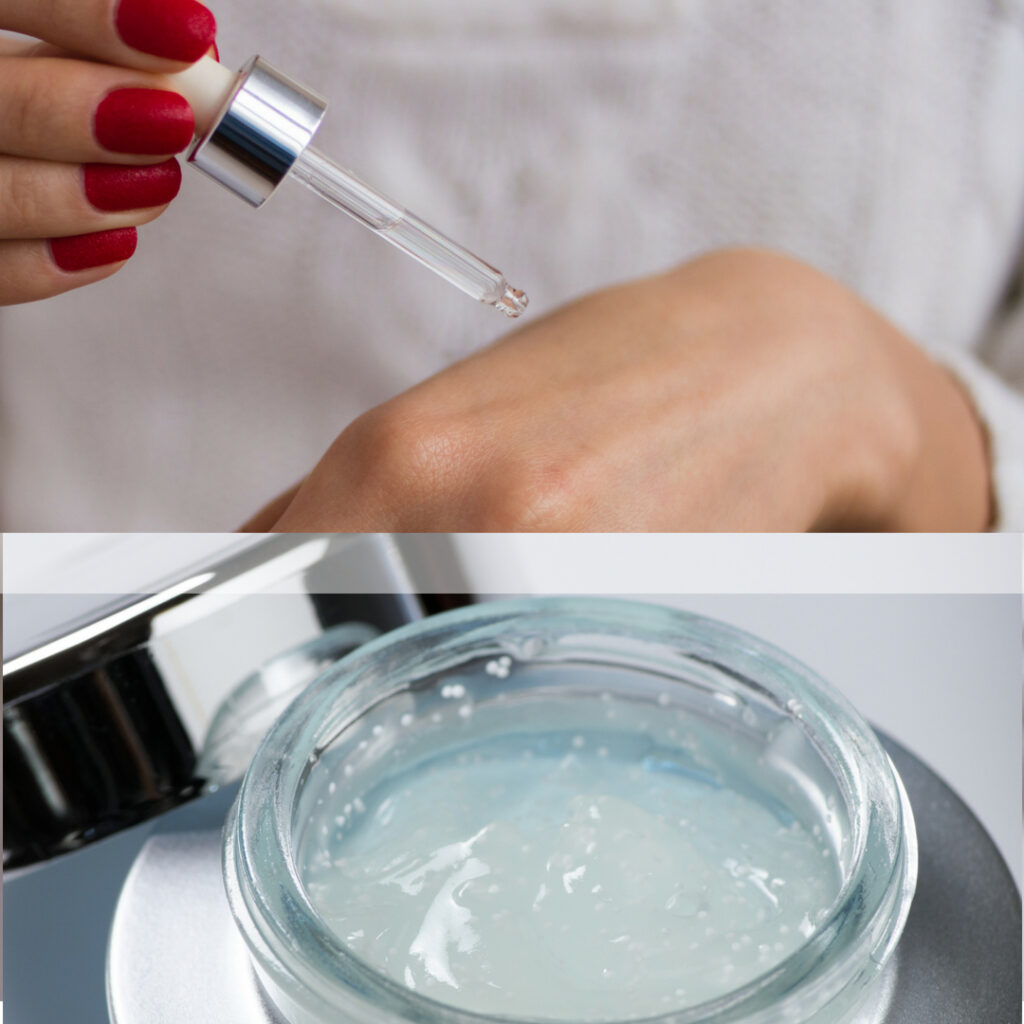Is your bathroom cabinet full of serums or are you more of a cream fanatic?
I am sure that if you are like most people the answer will probably be “both.”
When it comes to skin care, decisions can be hard. Temptation is as strong as a cup of coffee on a Monday morning. You face magazines giving you the latest beauty buzz, social media bloggers tapping on their must haves and celebrities raving about their favorite skin care products. From exotic facial oil serums to lavishing creams, they all sound incredible and promise quick solutions to every skin problem.
To choose correctly it is important to step back and take a closer look at the pros and con of each product and see which one fits your individual needs best.
If you are looking to correct a skin issue or for intense nourishment, serums also known as “boosters”, will give you an in-depth form of treatment to achieve accurate results. They have a light consistency and are well known for being concentrated formulations aimed to target specific skin concerns such as: anti-aging, acne, rosacea, hyperpigmentation, flaccid skin, dehydration, dull skin etc.
For example, one of the most popular types of serum in the market is vitamin C because of its many skin benefits. It can help brighten up the skin, support collagen production improving elasticity and lightening up hyperpigmentation helping to even out skin tone.
The main purpose of serums is to deliver active ingredients deep into the skin. They have great absorption power and generally contain a higher concentration of active ingredients providing fast results, which is why they are a fantastic addition to any anti-aging or corrective skincare routine.
The best way to select the right serum is to first identify the skin concerns and then select a serum with specific ingredients to target those concerns. They often can be layered since they don’t feel greasy on the skin and penetrate rapidly.
The combination of active ingredients in serums normally does not allow the inclusion of an SPF. Therefore, it is important to add a sunscreen to your day time skin care regimen.
Although, there is not a norm as to when is the right age to start using serums, early 30’s is a good age to begin a preventative skin program since the skin begins to experience some changes at that age. Mature skin likewise, can benefit from the use of serums to help restore and maintain better skin functioning and to combat the common signs of aging skin.
What is applied first, the serum or the cream?
Because of their light texture and ability of absorption, serums are applied first. Moisturizing creams second and if used separately from the cream, sunscreen should be applied last.
TIP:
—If you are using several serums, begin layering them with the one that has the lightest texture. Always “from thin to thick”. This is a good way to remember the order of use.
What are facial creams?
Facial creams include a broad range of textures and purposes for the skin, from plain hydration to sun protection and everything in between.
Active ingredients can also be contained within the formulation, but they are generally present in lower concentrations when compared to serums.
Creams have a heavier consistency which implies the addition of more fillers, emulsifiers and occluding (sealing) ingredients, making the formulation less aggressive.
Gel-creams and lotions are frequently thought as creams, these have a lighter texture and are more suitable for combination and oily skin types while heavier creams are more appropriate for dry skin.
There are also day and night creams. Day time creams typically contain antioxidants to counteract the effects of free radical damage, accentuated with the exposure to environmental elements during day hours and many of them already have SPF protection included within the formula.
Night time creams on the other hand, are rich in regenerative ingredients like retinoids, growth factors or stem cells among others, to support the skin’s ability to repair itself. One common characteristic of creams is to occlude hydration within the skin to prevent trans epidermal water loss.
Should I use both, serum and cream?
Both products are good depending on the skin type.
Oily skin does not need as much moisturization as dry skin, since the skin produces sufficient sebum. Thus, a serum can be more than enough, of course not forgetting the addition of sun protection during day time.
Someone with dry skin though, might find that the serum alone does not provide enough moisture and will need the additional lipids that moisturizing creams provide.
Be aware to find a moisturizer that is compatible with your skin type. Avoid using heavy creams if you have acne prone skin. And if you have dry skin, stay away from products containing drying alcohols or other drying ingredients that can aggravate dehydration.
When selected correctly, both serum and cream, can complement each other very well. The serum, delivering active ingredients deep into the skin and the cream, sealing those ingredients in and maintaining normal moisturization levels.
Thank you very much for being here.
Until next time,
Dora Salazar
Medical Aesthetician
Founder of Zkin Fix Skincare




